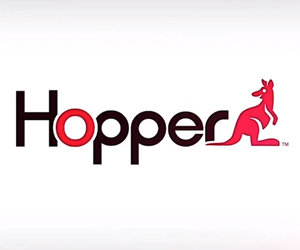 The commercials for Dish Network’s ad-skipping DVR, the Hopper, are quite memorable and humorous to a native of Massachusetts, like me. The actors have thick Boston accents, and they repeatedly pronounce the name of the device the way any good Red Sox fan would: “Hop-ah.”
The commercials for Dish Network’s ad-skipping DVR, the Hopper, are quite memorable and humorous to a native of Massachusetts, like me. The actors have thick Boston accents, and they repeatedly pronounce the name of the device the way any good Red Sox fan would: “Hop-ah.”
It’s ironic, though, that the Hopper’s commercials are so memorable. The device’s primary function is to eliminate commercials altogether. The Hopper automatically records the entire prime-time lineups for ABC, CBS, Fox and NBC. With a little user programming, however, many digital video recorders (DVRs) can do that. What sets the Hopper apart is that it enables playback completely sans commercials (versus fast-forwarding over them). Score another point for ad-slaying technology in the post-advertising age.
So what was the response of many of the parent companies of those networks that the Hopper records? They sued Dish Network, of course.
One Giant Leap* for Audiences
*Pun intended
The Hopper’s capabilities are a godsend for audiences who have been trying to sidestep commercials since parents intentionally sat their children next to the television so the kids could change the channel during commercials (That wasn’t just my dad who did that, right?). Of course, it’s not the be-all and end-all of commercial-free television programming. The Hopper only records the prime-time lineup on the four major broadcast networks, most of which is available free on Hulu and other websites. Since their customers already pay significant retransmission fees required by the broadcasters, Dish Network feels it is in their right to offer a technology like the Hopper. Said David Shull, Dish’s senior vice president of programming, “consumers should be able to fairly choose for themselves what they do and do not want to watch.”
Whether Dish has a legal leg to stand on won’t matter much to the broadcast networks. They pay the bills by selling advertisements. If audiences are eliminating ads altogether, advertisers have no choice but to go elsewhere. No broadcaster can stand for that, so they rage against anyone trying to remove another brick in the foundation of traditional advertising.
Fighting (for) the Future of Advertising
In the post-advertising age, reaching audiences isn’t an easy or a straightforward task. The primary options used to be print, billboard, radio and television, and the advertisers with the deepest pockets won. Now those mediums are just the tip of the iceberg, and the effectiveness of most of them is declining. Audiences are fragmented, and their methods of consuming media are vastly different from what they were a decade ago and continue to change and evolve at a frenetic pace.
This evolution has turned many brands on to post-advertising methods of engagement, but traditional advertisers still fight to keep their footholds. We see the cat-and-mouse game played out every day. As online video emerged, so too did pre-roll ads. Audiences fast-forward over commercials using their DVRs, so broadcasters have started to place extra show content in the middle of the commercial sets, causing viewers to stop to play the content in real time (they may simply want to see the content, or they may think that the commercials are over and their show is back on). Websites have ads that take over the whole page, and Spotify has seemingly written the book on how streaming-music technologies can interrupt the music experience with advertising (unless you pay a premium).
Evolution and Adjacency
Regardless of whether Dish Network and the Hopper prevail, this won’t be the last time we’ll see a technology beyond the standard DVR that battles commercials. According to CNN, several New York City stations, including the local Fox, PBS and Univision channels, filed suit against a new technology called Aereo that allows consumers to watch and record broadcast TV online by hooking up a small antenna to an Internet connection.
The landscape of content consumption has changed dramatically, and it will never be the same. Audiences are less and less tolerant of having their content experiences interrupted by advertising, and now they can fast-forward over or click or simply walk away from an advertisement.
This isn’t to say that television advertising is dead or that commercials can’t be effective. Instead, it’s to warn brand managers that the first question should be not where their content is but what their content is. Worry less about standing next to the audience’s desired content (since they can now hop over it with little effort), and become the content.
Do you think that the Hopper and Dish Network will prevail? What will the next evolution in ad-busting technology be?